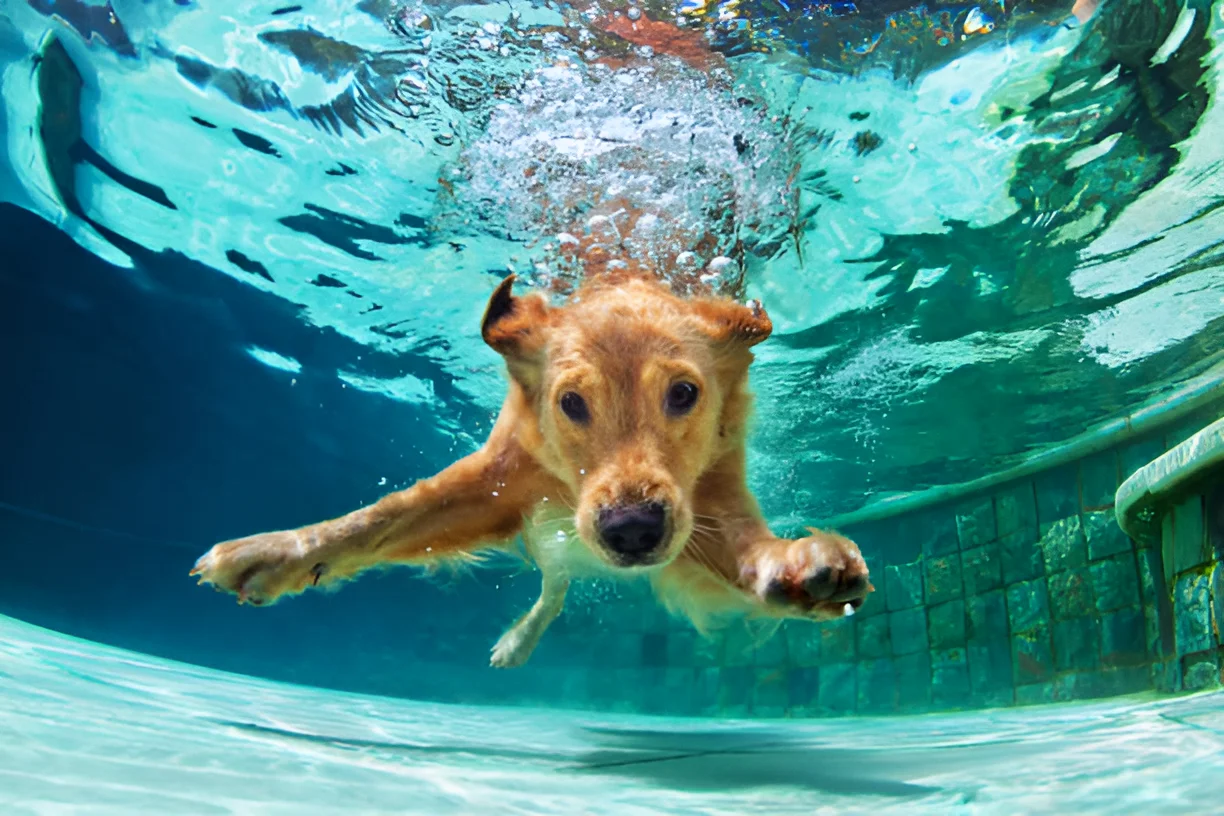Yes, many dogs have coats that are naturally water-resistant, thanks to their unique fur structure and oil production. This natural waterproofing helps protect them from the elements, but additional protection may be needed in extreme weather conditions.
Dogs come in a variety of breeds, each with unique coat types that serve different purposes. One of the fascinating aspects of a dog’s coat is its ability to repel water. This article will explore the science behind waterproof dog coats, the breeds with the most water-resistant fur, and how to care for your dog’s coat to maintain its natural waterproofing. We’ll also discuss when additional protection, such as dog raincoats, might be necessary.
The Science Behind Waterproof Dog Coats
Structure of Dog Fur
A dog’s coat is composed of two layers: the topcoat and the undercoat. Each layer plays a crucial role in providing protection and insulation.
- Topcoat: The topcoat consists of stiff guard hairs that help repel water and shield the dog from dirt and debris. These hairs are often longer and coarser, providing a barrier against moisture.
- Undercoat: The undercoat is made up of soft, downy hairs that provide insulation. This layer traps air close to the dog’s skin, keeping them warm in cold weather.
Natural Oils
Dogs produce natural oils that coat their fur, enhancing its water-resistant properties.
- Sebum: Sebum is an oily substance produced by the sebaceous glands in a dog’s skin. It coats the fur, making it slick and helping to repel water.
- Distribution: Regular grooming helps distribute these natural oils evenly across the coat, maintaining its waterproofing abilities.
Breeds with Naturally Water-Resistant Coats
Labrador Retriever
Labrador Retrievers are known for their water-resistant coats, which make them excellent swimmers.
- Double Coat: Labs have a dense double coat with a water-repellent topcoat and a thick undercoat that provides insulation.
- Oil Production: Their skin produces a significant amount of natural oils, enhancing the waterproofing of their fur.
Newfoundland
Newfoundlands are another breed with a highly water-resistant coat, suited for cold and wet environments.
- Thick Fur: Their thick, double-layered coat keeps them warm and dry, even in icy waters.
- Webbed Feet: In addition to their coat, Newfoundlands have webbed feet that aid in swimming.
Portuguese Water Dog
As the name suggests, Portuguese Water Dogs have coats that are well-suited for aquatic activities.
- Curly Coat: Their curly, dense coat is water-resistant and helps protect them while swimming.
- Minimal Shedding: This breed sheds minimally, which helps maintain the integrity of their waterproof coat.
Caring for Your Dog’s Waterproof Coat
Regular Grooming
Regular grooming is essential to maintain the health and waterproofing of your dog’s coat.
- Brushing: Brush your dog regularly to remove dirt, debris, and loose hairs. This helps distribute natural oils and prevents matting.
- Bathing: Bathe your dog as needed, but avoid over-bathing, which can strip the coat of its natural oils. Use a gentle, dog-specific shampoo.
Diet and Nutrition
A balanced diet supports healthy skin and coat, enhancing its natural waterproofing properties.
- Omega-3 Fatty Acids: Include foods rich in omega-3 fatty acids, such as fish oil, to promote a healthy coat.
- High-Quality Protein: Ensure your dog receives high-quality protein to support overall health and coat condition.
When Additional Protection is Needed
Extreme Weather Conditions
While many dogs have naturally water-resistant coats, additional protection may be necessary in extreme weather conditions.
- Raincoats: Dog raincoats provide extra protection during heavy rain, keeping your dog dry and comfortable.
- Cold Weather Gear: In very cold weather, consider using dog coats or sweaters to provide additional warmth and protection.
Health Considerations
Certain health conditions can affect the waterproofing abilities of your dog’s coat.
- Skin Conditions: Skin conditions such as dermatitis can disrupt the production of natural oils, reducing the coat’s water resistance.
- Age: Older dogs may produce less oil, making their coats less effective at repelling water.
Conclusion
Many dogs have naturally water-resistant coats that protect them from the elements. Understanding the structure of your dog’s coat and providing proper care can help maintain its natural waterproofing abilities. In extreme weather conditions or for dogs with health issues, additional protection such as raincoats may be necessary. By taking these steps, you can ensure your dog stays comfortable and dry, no matter the weather.
The photo featured below the post headline is Credit: Bicho_raro/istockphoto
I hope you find this post helpful and informative. If Yes’ feel free to share it with your friends!
Frequently Asked Questions
Do all dogs have waterproof coats?
Not all dogs have waterproof coats. Breeds like Labrador Retrievers, Newfoundlands, and Portuguese Water Dogs are known for their water-resistant fur.
How can I maintain my dog’s waterproof coat?
Regular grooming, a balanced diet, and avoiding over-bathing can help maintain your dog’s waterproof coat.
When should I use a dog raincoat?
Use a dog raincoat in heavy rain or extreme weather conditions to provide extra protection and keep your dog dry.
Can health issues affect my dog’s coat?
Yes, skin conditions and aging can affect the production of natural oils, reducing the coat’s water resistance.
Are there specific breeds with naturally water-resistant coats?
Yes, breeds like Labrador Retrievers, Newfoundlands, and Portuguese Water Dogs have naturally water-resistant coats.

